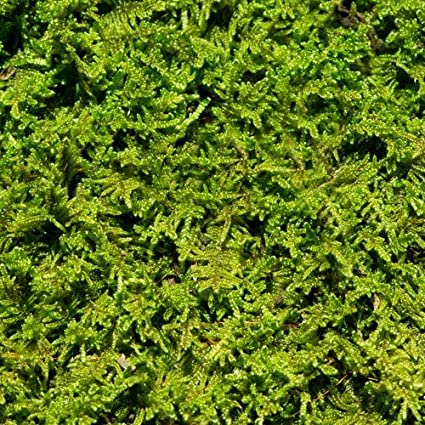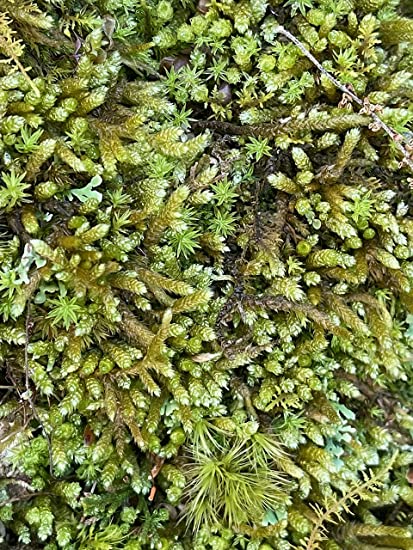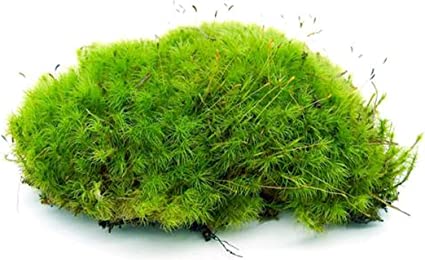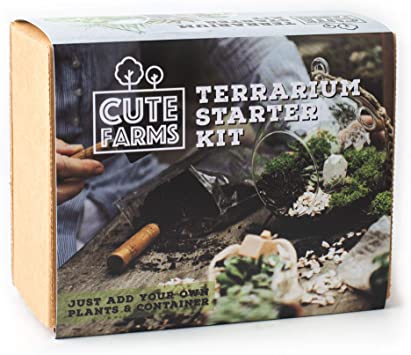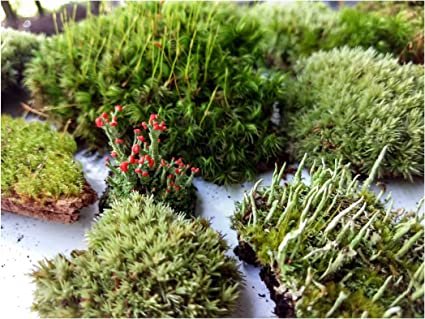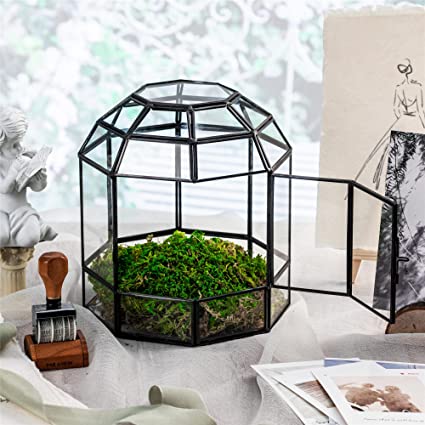Moss Bath Mat
Moss bath mats are a type of bath mat made from live or preserved moss. They are made to absorb moisture and keep your bathroom floor dry, while also adding a natural, eco-friendly touch to your bathroom design.
Benefits of using a moss bath mat include:
- Absorption of moisture: Moss bath mats are highly absorbent, which helps keep your bathroom floor dry and reduces the risk of slips and falls.
- Eco-friendliness: Moss bath mats are made from natural materials, making them an environmentally friendly alternative to synthetic bath mats.
- Antibacterial properties: Some types of moss have been shown to have antibacterial properties, which can help keep your bathroom cleaner and fresher.
- Relaxing atmosphere: The natural appearance and feel of a moss bath mat can help promote a relaxing and calming atmosphere in your bathroom.
- Long-lasting and low maintenance: With proper care, moss bath mats can last for years, making them a low-maintenance and cost-effective solution for keeping your bathroom floor dry and comfortable.
- Relaxing atmosphere: The natural appearance and feel of a moss bath mat can help promote a relaxing and calming atmosphere in your bathroom.
- Long-lasting and low maintenance: With proper care, moss bath mats can last for years, making them a low-maintenance and cost-effective solution for keeping your bathroom floor dry and comfortable.
- April 28, 2024
- Dagmara Mach


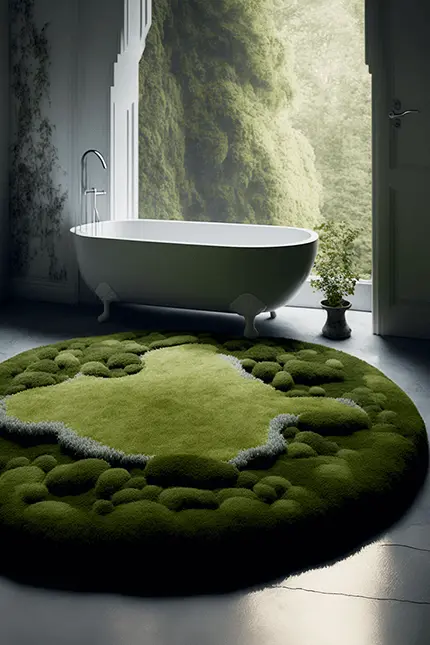
A living moss bath mat is exactly what it sounds like – a mat made from live moss that’s used primarily in the bathroom.
The moss is grown in a container or tray and then placed on a waterproof surface in the bathroom, such as a shower or the bathroom floor.
Moss mats, moistened by misting with water, provide a soft, natural, and unique alternative to traditional bath mats. Beautiful, organic, and easy to care for, Moss bath mats can be a low-maintenance addition to your bathroom or hot tub area.
Living moss bath mats add a touch of natural wonder, bringing a sense of peace and relaxation to your bathroom space.
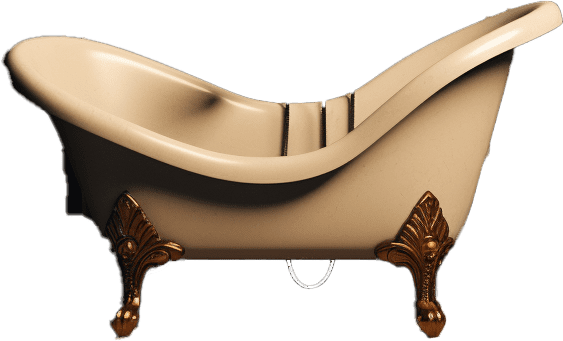
Shop on Amazon
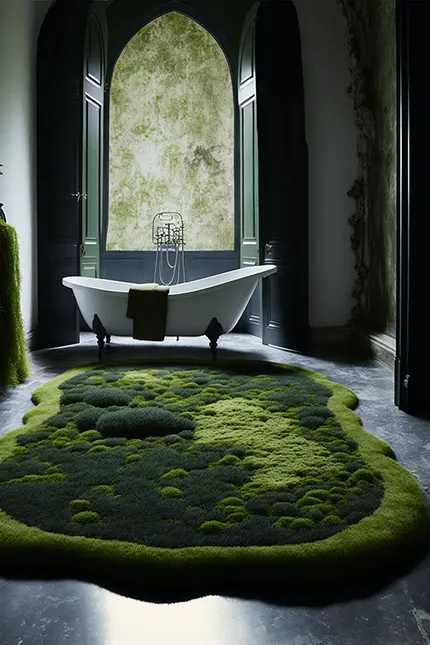

- Live moss
- Preserved moss
- Artificial moss
Live Moss
Sphagnum moss
Sphagnum moss is a type of moss known for its high absorbency and soft texture. It is often used in live moss bath mats and is available in a range of colors, including green, brown, and red.
Characteristics: Soft, spongy texture, high absorbency, range of colors available.
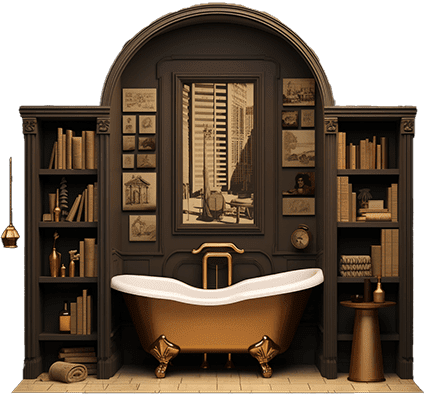
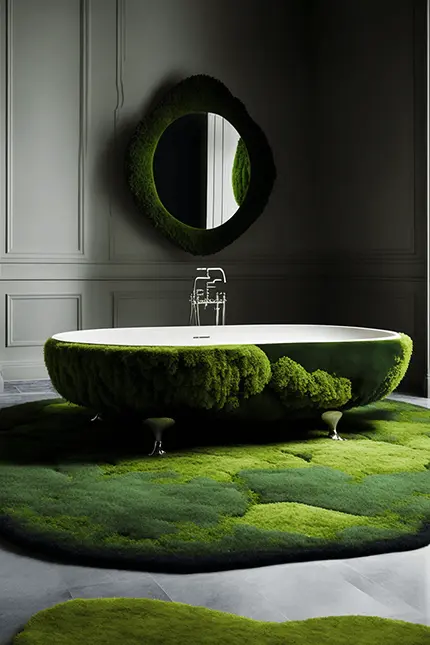
Sheet moss
Sheet moss is a type of moss that grows in flat, dense mats. It is often used in live moss bath mats for its ability to retain moisture and its soft, cushiony texture.
Characteristics: Soft, cushiony texture, ability to retain moisture, flat growth pattern.

Cushion moss
Cushion moss, also known as pincushion moss, pole moss, or bun moss, is a type of moss that grows in rounded, cushion-like clusters. It is often used in live moss bath mats for its ability to absorb moisture and its lush, full appearance.
Characteristics: Absorbent, lush, full appearance, cushion-like growth pattern.

Reindeer moss
Reindeer moss is a type of moss that grows in branching, branching clusters. It is often used in live moss bath mats for its unique appearance and its ability to retain moisture.
Characteristics: Unique appearance, ability to retain moisture, branching growth pattern.
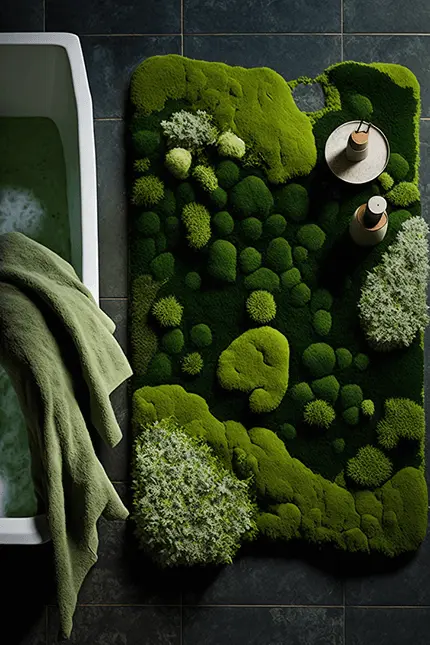
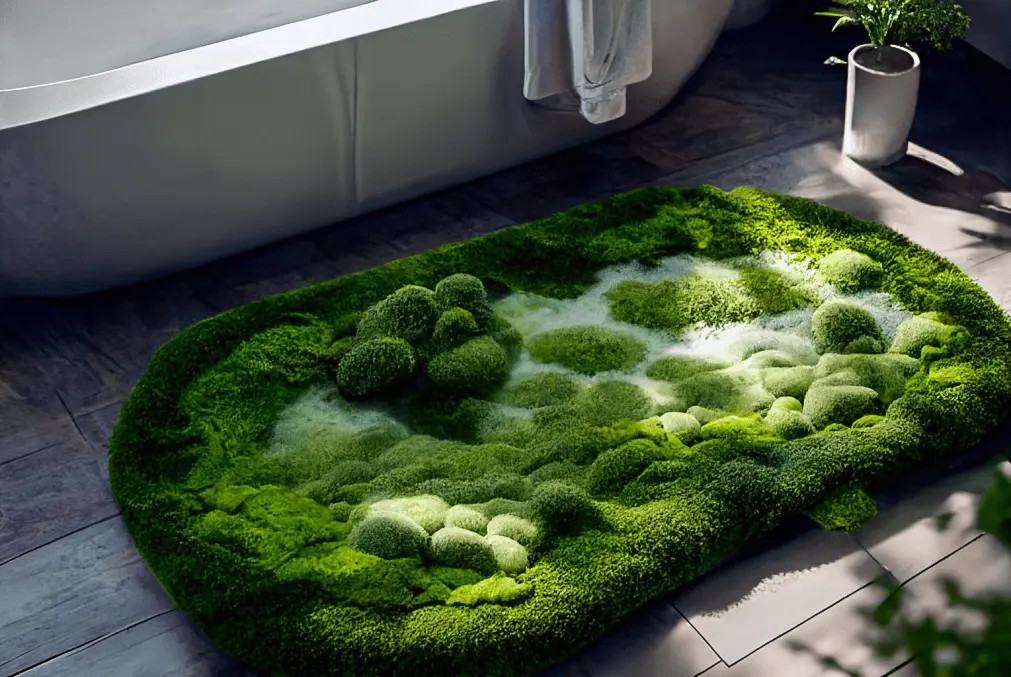
Comparison of moss types used for bath mats:
Live Moss:
Pros: Grows and spreads over time, naturally absorbent, creates a natural and organic look in the bathroom, can improve air quality.
Cons: Requires maintenance, can be difficult to care for, may not be suitable for all climates or bathroom conditions, may harbor mold and bacteria if not properly maintained.
Preserved Moss:
Pros: Long-lasting, low-maintenance, retains the look and texture of live moss, can be made to be naturally absorbent.
Cons: Can be more expensive than live moss, may not be as environmentally friendly as live moss, can develop an unpleasant odor over time if not properly cared for.
Artificial Moss:
Pros: Low-maintenance, long-lasting, does not require watering or sunlight, does not harbor mold or bacteria, affordable.
Cons: Not as environmentally friendly as live or preserved moss, does not have the natural absorbent qualities of live or preserved moss, does not improve air quality like live moss.
In conclusion, the choice between live, preserved, and artificial moss for a bath mat will depend on personal preference, bathroom conditions, and budget. Consider factors such as maintenance requirements, environmental impact, and absorbent properties when choosing the best type of moss for your bath mat.


Shop on Amazon
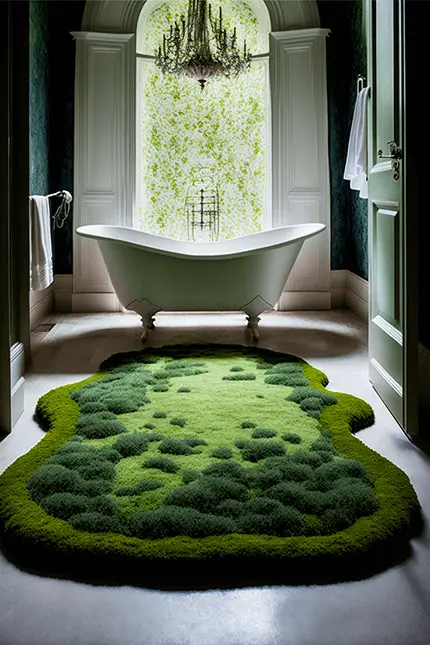
Preserved Mosses
Preserved moss has been treated to maintain its color and texture, but has lost its ability to grow, absorb moisture, or purify the air.
Each type of preserved moss will have similar characteristics to its live counterpart but with the added benefits of long-lasting and zero maintenance. The preserved moss will retain its color and texture without watering or sunlight.
It is generally okay to get preserved moss wet, but it is important to avoid over-saturating it, as this can cause the moss to break down or change its appearance. Additionally, it is important to follow the care instructions provided by the manufacturer, as some preserved moss may require special treatment to maintain its appearance.
Preserved moss is a good option for those looking for a no-maintenance and long-lasting mat.

Artificial Mosses
Artificial moss refers to synthetic materials made to look like real moss, but without the ability to grow or absorb moisture.
Artificial moss can be made from materials such as silk, polyester, and PVC. Artificial moss is often used for decorative purposes, as well as for creating moss-like effects in areas where live moss cannot be maintained or is not suitable.
Artificial moss will retain its appearance and texture, even in high-moisture areas like a bathroom. It is also more affordable and easier to care for compared to live or preserved moss.
Just be aware that artificial moss may not have the same absorbent qualities as live or preserved moss.
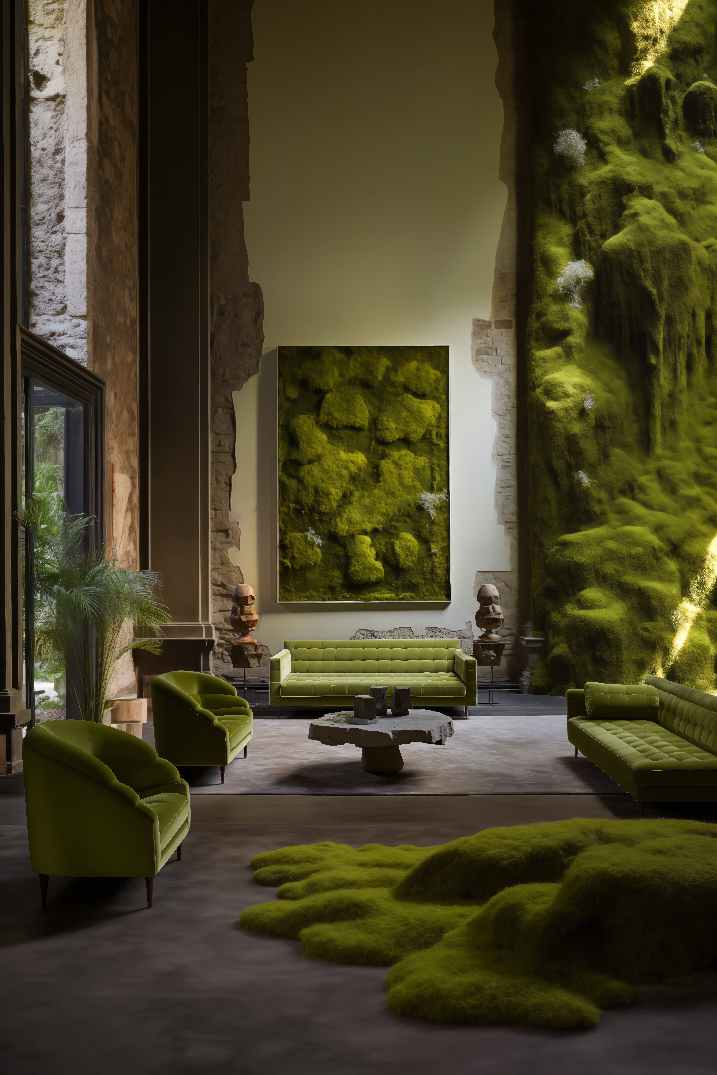
The easiest is the Hubulk Silicone Mat with raised edges.
If using this method, I recommend perforating the base of the mat to allow for drainage and using a layer of coconut coir liner in between the silicone and your moss.

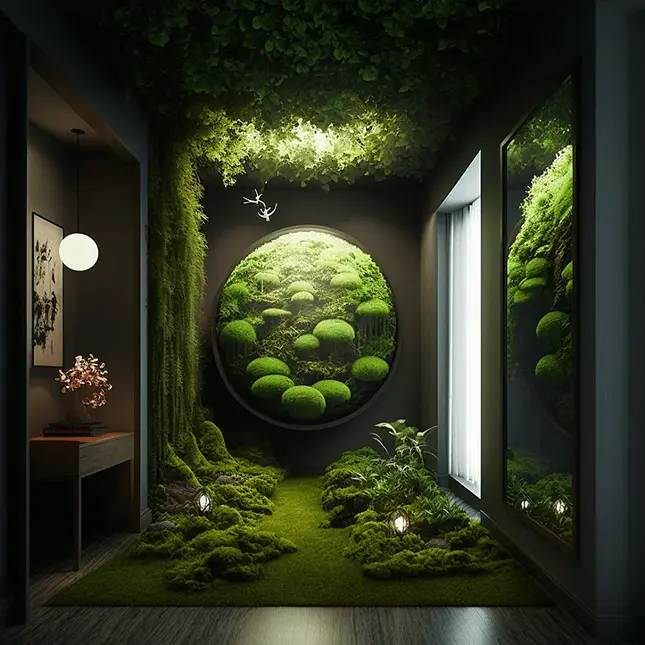
DIY MOSS MAT IN 10 SIMPLE STEPS
If you are using already grown moss from the woods, or offline, follow these steps to make a DIY moss bath mat using a silicone mat and coconut fiber liner as a substrate:
- Find a patch of moss in the woods that is dense and healthy. Look for a spot that gets partial shade and has good drainage.
- Gather your materials: a silicone mat, coconut fiber liner, scissors, and water.
- Cut the coconut fiber liner to fit the size and shape of the silicone mat.
- Lay the coconut fiber liner on top of the silicone mat.
- Carefully remove a layer of moss from the patch in the woods, taking care not to damage the roots or surrounding vegetation.
- Place the moss on top of the coconut fiber liner on the silicone mat, arranging it in an even layer.
- Secure the moss in place by pressing it down gently with your hands or a rolling pin.
- Water the moss well, making sure it is evenly moist but not soggy.
- Place the silicone mat in a shady spot and mist the moss with water every few days to keep it moist.
- The moss should be able to thrive and grow on the silicone mat and coconut fiber liner as long as it is kept moist. You may want to mist it with water more frequently at first until it is well-established on the mat.
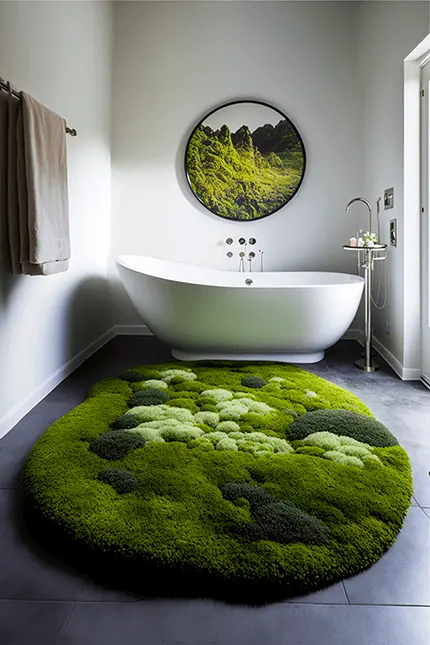
- Keep moss moist: Moss needs a consistently moist environment to thrive. Mist the moss with water every few days or as needed to keep it evenly moist. Avoid letting the moss dry out or become waterlogged.
- Place in a well-ventilated area: Moss benefits from good air circulation, so be sure to place the bath mat in a well-ventilated area of your bathroom.
- Avoid direct sunlight: Moss prefers partial shade, so try to avoid placing the bath mat in an area that gets direct sunlight. This will help to prevent the moss from drying out or getting sunburnt.
- Trim away any dead or damaged portions: If you notice any dead or damaged areas on the bath mat, use a small pair of scissors to trim away the affected areas. This will help to keep the moss looking healthy and prevent it from spreading any diseases.

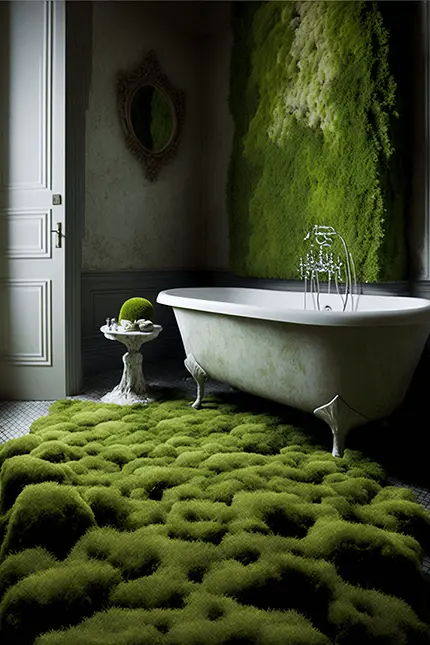

AIR PURIFYING: Moss is a natural air purifier that can help to improve the air quality in your bathroom. It absorbs harmful chemicals and pollutants from the air, such as formaldehyde and benzene, and releases oxygen.
HUMIDITY CONTROLLING: Mosses help stabilize room moisture levels to maintain a relative humidity of between 40 and 60 percent. This is especially useful when humidity drops during flu season. Research shows that influenza mainly spreads at humidity levels below 10 grams/cu. meter.
THERAPEUTIC: Moss has a calming and relaxing effect that can help to create a sense of peace and tranquility in your bathroom. It can be a therapeutic addition to your home and may help to reduce stress and promote a sense of well-being.
LOW MAINTENANCE: Moss is a low-maintenance plant that requires very little attention. It can be a good option for people who don’t have a lot of time to spend on home maintenance.
SOFT & COZY:
Moss bath mats are soft and cushiony, providing a comfortable surface to step on after a shower or bath. Unlike traditional bath mats made from synthetic materials, moss bath mats are made from natural materials that are gentle on the feet.
ANTI-BACTERIAL & ANTI-FUNGAL:
Moss is naturally anti-bacterial and anti-fungal, making it a great choice for use in a damp and moist environment like the bathroom. This helps to prevent the growth of mold, mildew, and other harmful microorganisms that can thrive in a damp bathroom.
QUICK DRY & MOISTURE ABSORBING:
Moss bath mats are absorbent, which helps to soak up water and moisture from damp feet. This helps to keep the bathroom floor dry and reduces the risk of slipping. Moss bath mats also dry quickly, reducing the risk of mold and mildew growth.
SUSTAINABLE:
Moss bath mats are an environmentally friendly alternative to traditional bath mats made from synthetic materials. Moss is a renewable resource that can be grown and harvested sustainably. Additionally, moss bath mats do not contribute to the production of harmful chemicals or pollutants.
AESTHETIC:
Moss bath mats add a natural and organic touch to the bathroom, making it a visually appealing choice for those looking to create a spa-like atmosphere. Moss bath mats come in a variety of colors, textures, and shapes, making it easy to find one that fits the style and decor of your bathroom.


Cleaning
Avoiding Mildew and Mold
Storage
Does Moss Need Sunlight?
Though moss doesn’t require direct sunlight to survive, it needs some light to carry out photosynthesis – the process by which plants and other organisms convert light energy into chemical energy to fuel growth and metabolism.
Mosses can grow in a range of light conditions, from full sun to deep shade, but they tend to grow best in partially shaded areas with indirect light.
Can Mosses Live in Dry Climates?
Although moss plants generally thrive in wet, shady areas, they are one of the most drought-resistant plants in existence. Some species adapted to survive in seasonally dry climates such as alpine rocks or stabilized sand dunes. During lengthy dry periods, mosses can completely dry out and suspend all growth. When moisture returns, moss plants will essentially come back from the dead and resume their photosynthetic metabolism.
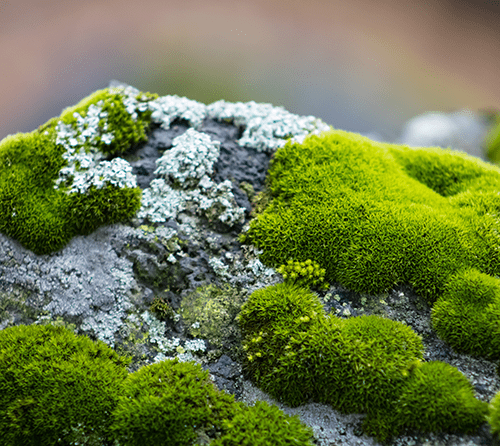
Shop on Amazon

These grasses, shrubs, and trees stabilize soil, reduce runoff, and improve infiltration through deep and extensive root systems. Learn more.
What Are Mosses?
Mosses, known as bryophytes make up some of the oldest and most drought-resistant plants on earth.
Dating back over 450 million years, bryophytes are considered by botanists to be some of the oldest plants in existence.
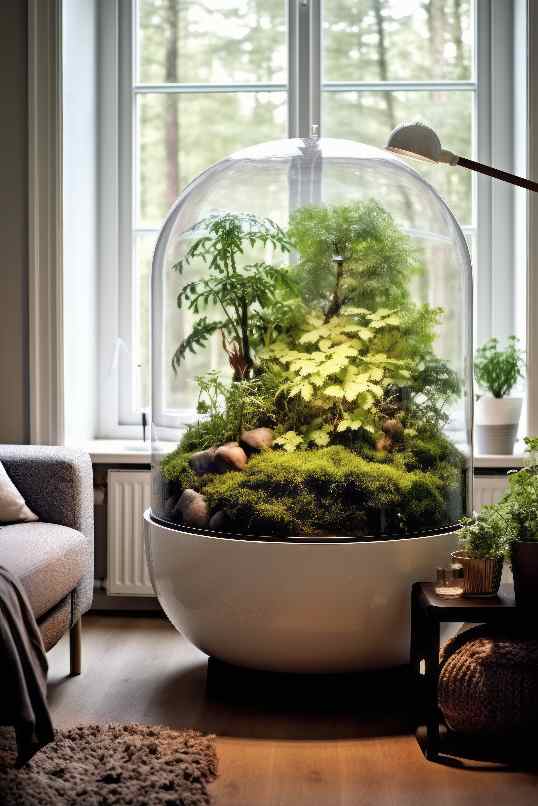
Low maintenance microclimates for indoor plants. Learn more.



